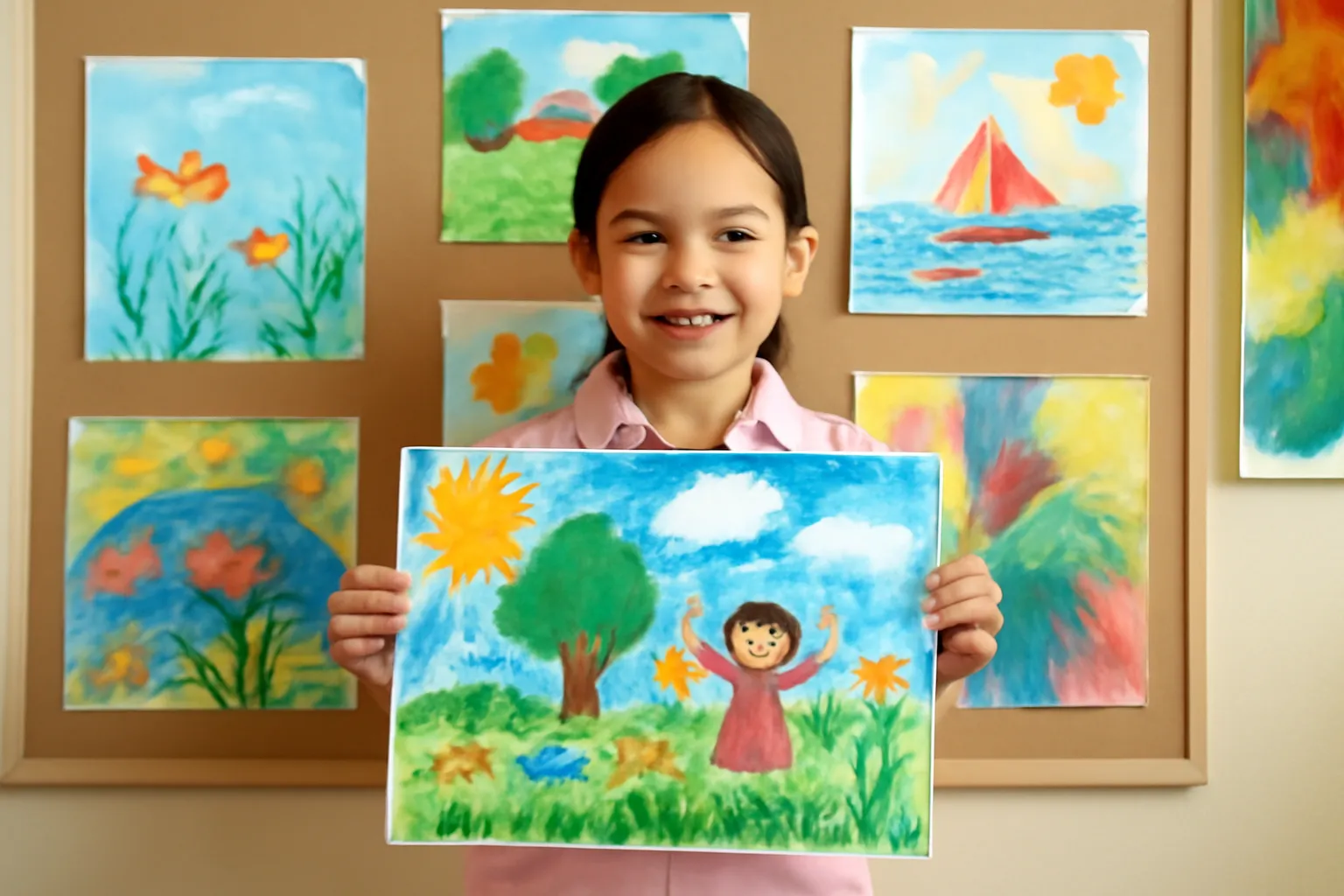Have you ever wondered what it takes for an elementary school student’s painting to win an award? Explore the world of children’s picture contests, learn about the process, and discover why these contests inspire young artists to express their creativity.
The Elementary School Student Picture Contest is an exciting event where creativity and imagination take center stage. These contests allow young artists to showcase their talents, develop their skills, and gain recognition for their unique artworks. From colorful landscapes to whimsical portraits, these competitions are a fantastic way to encourage children to express their creativity while gaining valuable experience. In this article, we will explore the different aspects of elementary school student picture contests, the process behind these events, and the benefits they offer to the young participants.
Elementary School Student Picture Contest
An Elementary School Student Picture Contest is not only a fun way for kids to express themselves artistically, but it also plays an important role in their development. These contests are held by schools, local organizations, and national bodies to encourage children to explore their creative talents and embrace the joy of drawing.
The Importance of Creativity in Education
Creativity is a vital skill that helps children express their thoughts, emotions, and ideas. When young students participate in picture contests, they learn to see the world differently and experiment with various artistic techniques. It also enhances their problem-solving skills as they figure out how to communicate their ideas through colors, shapes, and forms.
In addition to artistic growth, these contests help boost children’s confidence. Winning or even participating in such contests allows them to feel a sense of accomplishment. It also exposes them to a wider audience, which might inspire them to pursue their artistic passions further.
How to Get Involved in a Contest
To take part in an elementary school student picture contest, students typically need to submit their artwork within a specified theme, such as nature, dreams, or family. Some contests may have guidelines on what types of mediums are allowed, such as watercolors, crayons, or digital art.
-
Step 1: Look for opportunities, which are often advertised through school newsletters or local community boards.
-
Step 2: Follow the submission guidelines carefully. Make sure to include all necessary information, such as the title of the artwork, the artist’s name, and grade level.
-
Step 3: Submit the artwork before the deadline and wait for the results.
Benefits of Picture Contests for Children
There are numerous benefits to participating in a children’s picture contest. These events allow kids to:
-
Develop their fine motor skills through drawing and painting.
-
Improve their concentration and attention to detail.
-
Learn how to express emotions and ideas visually.
-
Gain recognition for their efforts and creativity.
-
Build self-esteem and a sense of accomplishment.
👉Learn more about elementary school student painting competitions👈
Children’s Picture Contest
Children’s picture contests are often organized on a larger scale, beyond the classroom, allowing young artists to compete with their peers from different schools or regions. These contests have the power to bring out the best in children and inspire them to push their creative boundaries.
Popular Themes in Children’s Picture Contests
Themes for these contests can vary widely, and they often reflect the issues, interests, or events of the time. Some of the most common themes include:
-
Nature and Environment: Many contests encourage children to depict nature, focusing on plants, animals, and ecosystems.
-
Dreams and Imagination: These themes allow children to express their wildest fantasies and imaginative concepts.
-
Family and Friendship: Depicting relationships, love, and connection is a favorite subject for many young artists.
-
Cultural Heritage: Some contests invite children to reflect on their cultural background or heritage through art.
-
Celebrations and Holidays: Artworks celebrating holidays or local events are also common.
By participating in these contests, children not only learn new artistic techniques but also gain insights into various cultural, social, and environmental issues. For example, when children create art based on environmental themes, they may become more aware of the importance of protecting the planet.
Judging Criteria and Recognition
Children’s picture contests often have panels of judges who evaluate the artworks based on several criteria, such as creativity, originality, technique, and relevance to the theme. Recognition in such contests can come in many forms:
-
Certificates or Trophies: Many contests offer awards for first, second, and third place, as well as honorable mentions.
-
Exhibitions: Winning artworks may be displayed in galleries or at special events.
-
Publication: Some contests offer to have the children’s artwork featured in books, magazines, or online platforms.
Winning a prize in a children’s picture contest is a great way for a child to feel proud of their artistic achievements and gain recognition for their hard work.
👉Find local children’s picture contests near you👈
Award-Winning Elementary School Student Painting Competition
The recognition of talented young artists is an important aspect of elementary school student painting competitions. These events provide an incredible opportunity for students to not only showcase their artwork but also receive feedback and awards for their hard work and dedication.
Features of Award-Winning Competitions
Award-winning elementary school student painting competitions are often held by large institutions such as art museums, education centers, or corporations. These events can have a national or even international reach. What sets these competitions apart is the prestige associated with winning and the quality of the artwork submitted.
Preparing for Success
Success in an award-winning painting competition often requires careful preparation. Here are some strategies students can use to improve their chances of success:
-
Understand the Theme: Make sure to fully grasp the competition’s theme and incorporate it meaningfully into the artwork.
-
Practice Drawing Skills: Experiment with different techniques and styles before the competition.
-
Seek Feedback: Share your work with teachers or family members for constructive criticism.
-
Be Creative: Think outside the box and try to bring a unique perspective to your work.
-
Pay Attention to Details: Small details, like shading, background, and proportions, can make a big difference.
The Impact of Winning
Winning an award in a prestigious competition can have long-lasting effects on a young artist’s life. Apart from gaining recognition, it can also inspire them to pursue a future in the arts. Many award-winning students go on to participate in art schools, exhibitions, and other opportunities. Some even secure scholarships or internships that help them further their artistic careers.
Winning competitions also has psychological benefits, such as improved self-confidence and a sense of accomplishment. These young artists can take pride in knowing that their hard work has been acknowledged and that their creativity has made an impact.
Explore more about award-winning elementary school student painting contests
Conclusion
Elementary school student picture contests are more than just a fun activity—they provide a platform for young artists to showcase their creativity, develop new skills, and gain recognition for their talents. Whether participating in a local event or a national competition, these contests offer a variety of benefits that help shape children’s artistic journeys. By encouraging young minds to express themselves through art, we inspire future generations of creators and innovators.
In the words of Pablo Picasso, “Every child is an artist. The problem is how to remain an artist once we grow up.” So, let’s continue to support and celebrate these young talents, for they may one day be the next generation of renowned artists.






